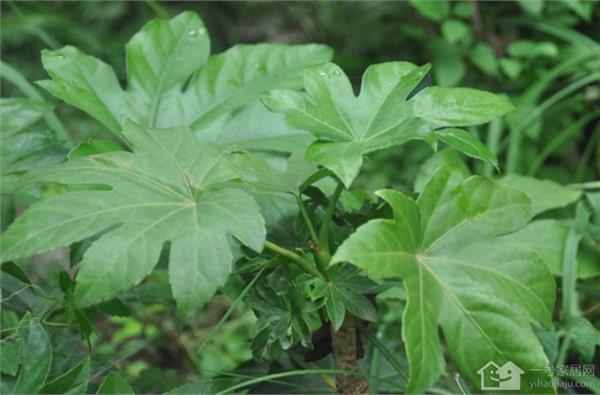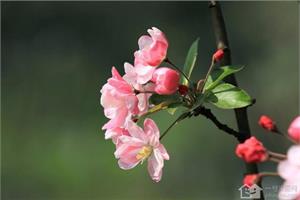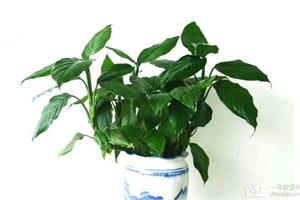Medicinal value of eight claw gold plate culture method of eight claw gold plate
Eight-claw golden plate produced in Japan and Taiwan and other places, ordinary people may not be able to reflect what the name is, but with the eight-claw golden plate planted more and more widely in China, many people have seen it. Although the eight-clawed golden disk flower is not gorgeous, it is very elegant and is often used as a potted leaf flower. Although it was a potted flower, the eight-clawed golden plate also had certain medicinal value. Today, Xiaobian will introduce you to the medicinal value and breeding methods of the eight-claw golden plate.

Medicinal Value of Bazhao Jinpan
Anise is an evergreen shrub of Araliaceae. Its leaves are nearly round, 5-9 split, large and shiny. Most of its leaves are 8 split, and sometimes the edge is golden yellow. Flowers are yellow white or pale green. Set into panicles, terminal, October to November open, flowers although not gorgeous, but very elegant, often as potted foliage flowers. Its medicinal value indications and effects are blood circulation, phlegm cough, wind dehumidification, stasis pain. Indications for traumatic injury, cough phlegm, rheumatism pain, gout.
Culture method of golden plate with eight claws
1, star anise plate planted in forest edge, ditch edge and other semi-shady wet place to grow best, potted management is also convenient. Pot soil available garden soil 3 parts plus 1 part chaff ash mixed use, add base fertilizer is better. The upper pot should be carried out before germination in spring, and when the plant is higher, it can be appropriately truncated to suit potted viewing. Usually maintenance to avoid direct sunlight, placed in the north side of the building and other semi-shady place well-ventilated environment is more suitable. In the new leaf growth period, watering should be appropriate more, keep the soil moist; later watering should master between dry and wet. When the climate is dry, water should also be sprayed on the plant and its surroundings to humidify it. 5-9 In January, cake fertilizer was applied twice a month. If there are no seeds left after flowering, cut off the residual flower stalks so as not to consume nutrients. Winter in the south of the Yangtze River area open winter basic unharmed, potted seedlings, to put into the cold room is safer.
2, usually more than the use of cutting propagation, spring sowing in the third year 3-4 friends, autumn planting in August, select two years of stiff branches, cut into 15cm long cuttings, oblique insertion sand bed 2/3, moisture, and with plastic arch shed closed, shade. Summer 5-7 months with young shoots, maintain temperature and shade, and appropriate ventilation, rooting after removal of the arch shed, keep the shade. Sowing, picking seeds in April, stacking after ripening, washing seeds, drying can be sown or mixed with sand stratification, storage in cellars, sowing the next spring. After sowing, cover the grass to keep moisture, sprout and emerge about 1 month, spray water to keep moisture after removing grass, prevent cold after autumn, and stay in bed for 1 year to transplant. Plant division, before germination in spring, dig out the roots of the seedlings and transplant them with soil.
3. Cutting propagation is the main method. The best method is to change pots from March to April. Select 2~3-year-old strong lateral branches with terminal buds. Cut cuttings about 15 cm long from the upper part. Insert 2~3 leaves into the sand bed. Pay attention to shade and keep the soil moist. When the weather is hot and dry, spray several times to the leaves every day to keep the air humidity. Under the condition of 20~25℃, it can take root in 1 month and can be potted in 2 months.
4, plant division propagation is relatively simple, can be combined with spring pot change, the full pot of plants from the pot poured out, pruning the poor growth of the root system, and then the original plant cluster cut into several clusters or several plants, planted into the appropriate size of the pot, placed in a ventilated cool place maintenance, 2~3 weeks can be transferred to normal management. Plant division and propagation should follow the division and seed in order to improve the survival rate. 3. Sowing and reproduction are carried out after seed harvest in late April. The seeds are fully ripened and then sown in seedbeds. Pay attention to shade, keep the bed soil moist, and sprout 1 month after sowing. Diseases and pests: mites, aphids harm plants, should be timely removed affected leaves or wipe aphids, serious available 40% omethoate emulsion 1500~2000 times spray control.
The above is the introduction of the medicinal value of the eight-claw golden plate and the related content of the breeding method of the eight-claw golden plate. When planting the eight-claw golden plate, we must pay attention to its fertilization and watering methods. I believe that after reading the contents introduced in the small series, everyone has a certain understanding of planting eight-claw gold plate.
Related
- Wuhan Hospital Iron Tree Blooming Result Was Instantly Frightened by the Gardener Master
- Which variety of camellia is the most fragrant and best? Which one do you like best?
- What is the small blue coat, the breeding methods and matters needing attention of the succulent plant
- Dormancy time and maintenance management of succulent plants during dormancy
- Minas succulent how to raise, Minas succulent plant pictures
- What are the varieties of winter succulent plants
- How to raise succulent plants in twelve rolls? let's take a look at some experience of breeding twelve rolls.
- Attention should be paid to water control for succulent plants during dormant period (winter and summer)
- Watering experience of twelve rolls of succulent plants
- Techniques for fertilizing succulent plants. An article will let you know how to fertilize succulent plants.



